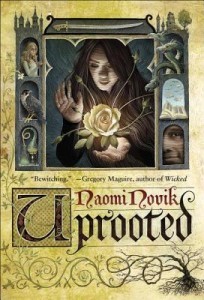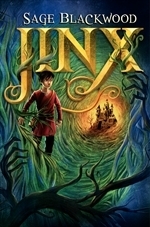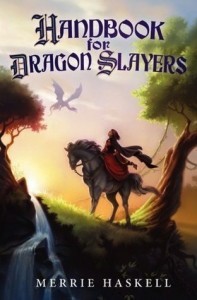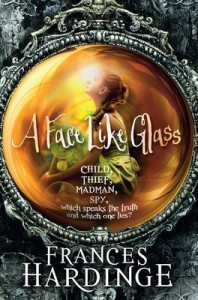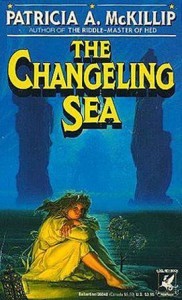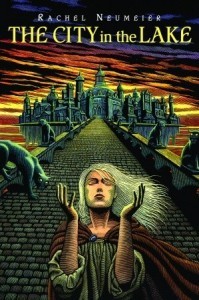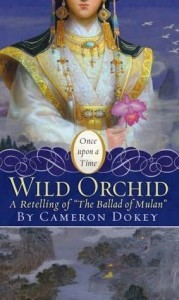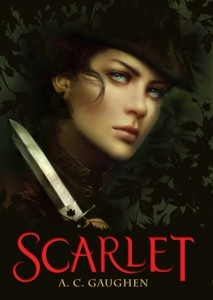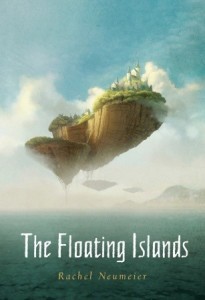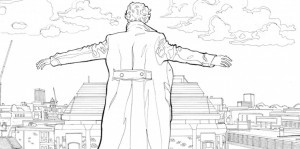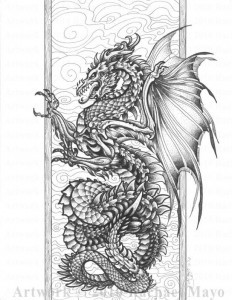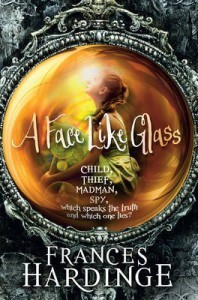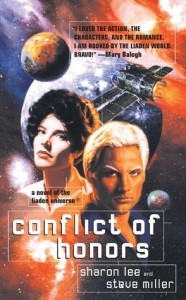Rachel Neumeier's Blog, page 321
November 10, 2015
Original fairy tales
So, obviously, in addition to the “retold” or “novelized” forms of fairy tales, where an author takes an old fairy or folk tale and puts their own spin on it, we have new (modern) original fairy tales. These are stories that capture the feel of fairy tales, but aren’t based on any specific Brothers Grimm type of story.
In order to be a fairy tale, a story must:
1. Have ineffable magic, not magic-as-science. This is relatively rare these days, as authors are pushed to explain and codify their magical systems, but it’s essential for a fairy tale.
2. Have powerful magic that hovers around the edges of ordinary life, a continual presence.
3. Follow enough fairy tale tropes that the reader can recognize the type of story they’re reading. If there’s a forest, it’s probably enchanted. If an animal speaks to you, you should probably listen. If you have a chance to help someone in need, you probably should do that.
4. Have a moral center where the good guys are not the same as the bad guys and where the good guys win, or mostly win.
5. Have a bucolic setting.
I just made all that up in a couple of minutes, but it seems right to me. What do you all think? I’m not sure I’m really committed to a bucolic setting, but I think that’s typical and kind of expected and I’m not sure you can capture the feel of a fairy tale in any other setting. Oh, wait, I can think of one example, which I’ll mention in a moment, but bucolic settings are surely helpful for establishing the feel of a fairy tale.
What else does a story need in order to be a fairy tale?
Let’s test out the definition with half a dozen obvious examples.
1. Uprooted by Naomi Novik.
Not really a Beauty and the Beast retelling, this is actually an original story with just faint echoes of Beauty in the first third. It develops in ways that are very different. I think it basically fits all the criteria above.
2. Jinx by Sage Blackwood.
Definitely original, but the enchanted forest is SO different from the one in Uprooted, you really see how differently the fairy tale tropes can be developed by different authors. I’m so much looking forward to re-reading the first two books of this trilogy so I can go on with the third. Soon, I hope.
3. Handbook for Dragon Slayers by Merrie Haskell.
Haskell’s other books were retellings . . . more or less . . . with a lot of originality in them, but still, retellings. This one was original, drawing on the feel of fairy tales without echoing any particular tale.
4. A Face Like Glass by Francis Hardinge
Okay, fine, the setting could hardly less bucolic. But still, this is, I think, a fairy tale. And quite, quite original.
5. The Changeling Sea by Patricia McKillip
How many of Patricia McKillip’s books count as fairy tales? Not sure, but this one does. The setting is not *exactly* bucolic, but of course a far more ordinary setting than in Hardinge’s book. No enchanted forest, but plenty of enchantment. And so beautiful.
And one more, which I could hardly leave off:

November 6, 2015
Fairy Tales and Folk Tales: Types of retellings
This post at By Singing Light caught my eye, since I also really enjoy fairy tale retellings. And folk tale retellings etc. What’s a more general term for this kind of modern story that riffs on something else — fairy tale, folk tale, mythology, whatever? Is there a general term?
Anyway, Maureen’s post is about fairy tales retold “on the slant.” Stories that “Don’t so much destroy the original as remake it.” In this context, Maureen refers to The Winter Prince by Elizabeth Wein, which is a wonderful story based on the Arthurian legend; The Girls at the Kingfisher Club by Genevieve Valentine, which I have on my TBR pile; and Bone Gap by Laura Ruby, which has been very much on my radar and just moved up the TBR pile because hey, it’s a retelling? Who knew?
But all this opens up four basic categories of retellings, all of which I can really enjoy or really dislike, depending:
1. Retellings that stick very closely to the original fairy tale.
These can be wonderful, but, for me, only if I like the original fairy tale. Here I mean stories like Beauty by Robin McKinley, in contrast to stories like Shannon Hale’s The Goose Girl. Both stuck quite closely to the originals, but it turns out I really dislike the original Goose Girl fairy tale, so sticking closely to it was not an asset for me.
I read the original after reading Hale’s book; I hadn’t remembered much about it, and no wonder, because I thoroughly disliked it. For me, Hale’s story would have worked a LOT better if she had departed significantly farther in certain specific ways (*cough* saved the horse *cough*).
What about Jenna Starborn by Sharon Shinn? That’s a retelling of Jane Eyre, a rather close retelling considering that it’s SF. It has some wonderfully artistic touches. I don’t particularly like Jane Eyre as a story, so the pleasure in reading Shinn’s version comes specifically from seeing how she put her story together while sticking to the original. But if we’re going to include a book like Jenna Starborn, we need a term that encompasses retellings of fairy tales AND folk tales AND classics. I guess maybe we can just say “retelling” and let it go at that?
No matter what, though, stories where the protagonist is ineffectual, where the protagonist has to cheat to win (Rumpelstiltskin, say), or where the ending is necessarily tragic . . . those aren’t likely to work for me no matter how beautifully they are told. So if the original tale drew on any of those things, then if the retelling departs from that, great.
2. Retellings “on the slant.”
Let’s say that these are stories that echo the original in important ways while departing from it significantly. I agree that The Winter Prince is a good example. It has almost nothing to do with the original story. That’s very different from, say, Mary Stewart’s The Wicked Day, which is also a Mordred story from Mordred’s pov. In the latter, the story does stick closely to the familiar legend. I like both, although Wein’s book does not end with a tragedy, which for me is a biiiig plus.
Another “on the slant” fairy tale, I think, is Merrie Haskell’s The Princess Curse. That one draws on The Twelve Dancing Princesses, but it departs dramatically from the original — in contrast to, say, Robin McKinley’s “Twelve Dancing Princesses” retelling, which I also loved and which stuck very, very closely to the original.
3. Retellings that destroy the original.
My understanding is that Sarah Prineas’ Ash and Bramble is like this. Here’s what Goodreads says:
No one has ever broken free of the Godmother’s terrible stone prison until a girl named Pin attempts a breathless, daring escape. But she discovers that what seems to be freedom is a prison of another kind, one that entangles her in a story that leads to a prince, a kiss, and a clock striking midnight. To unravel herself from this new life, Pin must choose between a prince and another—the one who helped her before and who would give his life for her. Torn, the only thing for her to do is trade in the glass slipper for a sword and find her own destiny.
You can see that although Cinderella is a starting point for this story, Prineas then goes off in a dramatically different direction.
Another is the play “Into the Woods.” I’d say that absolutely destroyed all the fairy tales that were involved in the play. In a fun way, of course. My personal favorites in that play are the two princes. They are so egotistical and ridiculous.
4. Stories that contain a faint but identifiable echo of a familiar fairy tale or folk tale.
That would be like Cinder by Marissa Meyer. It’s definitely got some echoes of Cinderella, but it departs so substantially that I wouldn’t say it’s a retelling at all. It’s a story that contains recognizable elements of the original, but that’s all. This particular story didn’t really work for me, but the extreme departure from the original fairy tale wasn’t the problem.
Other stories, such as Laura Florand’s romances, definitely benefit from containing faint echoes of one or another fairy tale. Keeping an eye out for the fairy tale references just adds to the delightfulness of the story. You know, just thinking about this makes me want to go re-read Once Upon A Rose, which btw I wrote in for The Goodreads Choice Awards. I just mention that in case any of you want to do the same, though I expect it would take quite a write-in campaign to get a book through to the second round.
Anyway, the point is, Once Upon a Rose would be fragrant with the scent of roses and warm and charming no matter what. But the echoes of the fairy tale that drift through the story are an added pleasure.
So, four basic categories. Did I miss any? Got a favorite fairy tale that fits into one or another of these categories?

November 5, 2015
Girls who disguise themselves as boys
The girls-disguise-themselves-as-boys trope has always been one that appeals to me.
Every writer handles this differently, of course, but the situation is generally pretty fraught because it adds the question, What happens if she gets found out? to the question, How can we save the world? And, of course, generally the girl is found out before the end of the story and generally this does lead to a crisis.
So, today Gail Carriger has a post at tor.com: Five books in which girls disguise themselves as boys.
Her list:
Alanna, of course — Tamora Pierce’s Alanna from the Lioness quartet. It would have been astonishing if Carriger hadn’t included Alanna.
Sword Masters by Selina Rosen, which to me sounds a bit like a Mulan story — not that there’s anything wrong with that!
The Price of the Stars by Debra Doyle & James D. MacDonald, which is space opera.
To Play the Lady by Naomi Lane
Newt’s Emerald by Garth Nix
As it happens, I haven’t read any of those except Pierce’s Alanna series. But I can sure think of quite a few more stories using this trope that I definitely loved, plus a couple of others that I haven’t read yet but have on my TBR pile. Let’s count ’em off, in no particular order:
Hunting by Andrea K. Höst. This is one story in which the woman’s masquerade is discovered, but everyone handles the discovery with fair to good aplomb.
Monstrous Regiment by Terry Pratchett. I’m laughing just thinking of this story. Actually, this would be a pretty good introduction to Pratchett’s work. But you could hardly say anything about it without giving away too much.
by Django Wexler. One of my favorite books from recent years. I’m so much looking forward to the 4th and last book coming out next year. I’m going to re-read the first two and then go one with the series.
Outlaws of Sherwood by Robin McKinley. I do think it’s impossible to do a truly successful ending to the Robin Hood legend, and I don’t think McKinley pulled it off. But I like the book quite a bit.
Mairelon the Magician by Patricia Wrede. The sequel didn’t appeal to me nearly as much, but this was one of my favorite’s of Wrede’s stories.
Beacon at Alexandria by Gillian Bradshaw. I’m departing from SFF here, but this is quite possibly in my personal top ten list for favorite books of all time.
The Corinthian by Georgette Heyer. One of the first books of Heyer’s I read, and such a charming protagonist. I can’t quite sympathize with the male lead’s problem at the beginning of the story, though. I mean, he was just going to marry this woman because of quite mild pressure from her family, explicitly to let her family sponge off his wealth. Baffling. Maybe that kind of thing made sense at the time Heyer was writing?
A Free Man of Color by Barbara Hambly. The woman who dresses as a man is not the protagonist, but I like her a lot.
Okay, and that’s all I can think off right off, but here are a couple on my TBR pile:
Wild Orchard by Cameron Dokey.
This is a Mulan re-telling. I’m looking forward to trying it!
Scarlet by A.C. Gaughen.
As in, Will Scarlet. So this is another take on Robin Hood. I wonder if Gaughen will pull off a really satisfying ending?
And, of course, I can hardly leave the subject without mentioning The Floating Islands

November 4, 2015
Coloring books
You know, I DO NOT NEED another hobby. But I have to say, these new adult coloring books are really quite tempting.
Here’s a post at tor.com about a new Sherlock coloring book.
One does see articles like this one at the New Yorker, declaring that adult coloring books, like YA stories, are inherently childish and thus reflect a negative cultural shift away from adulthood. While I’m certainly willing to decry some of the directions American culture seems to be taking, this argument is surely too silly to actually need refutation. I mean, think about it for two seconds and I’m sure you will recall that the extremely similar hobby of paint-by-numbers was popular among adults in the fifties, a decade seldom held up as evidence of a trend away from acceptance of adulthood in American culture.
Anyway, Sherlock is okay, I guess, but I was never into Sherlock Holmes and don’t care about the modern reprise of Sherlock. No, the coloring book that tempts *me* is Rachel Mayo’s dragon coloring book, which I saw at Archon and nearly but not quite picked up.
Ah, yes, dragons! Even though I can hardly justify spending time with coloring books, no matter how elegant, I really am *very* tempted. Next time I see one of Mayo’s coloring books, shoot, I’ll just pick it up so I can *look* at it now and then. And pick up a nice set of colored pencils. Surely one drawing a month wouldn’t be too self-indulgent?

November 3, 2015
Recent Reading: A FACE LIKE GLASS by Francis Hardinge
So, yes, breaking my Reader’s Paralysis of Indecision, I finally picked A FACE LIKE GLASS off my TBR pile:
One dark season, Grandible became certain that there was something living in his domain within the cheese tunnels. To judge by the scuffles, it was larger than a rat, and smaller than a horse. On nights when hard rain beat the mountainside high above and filled Caverna’s vast labyrinth of tunnels with the music of ticks and trickles and drips, the intruding creature sang to itself, perhaps thinking that nobody could hear.
You all insisted that this was a wonderful book and so I added it to my TBR pile. Where it sat until now, mostly because, to be perfectly honest, the official description of this book sounds kind of ridiculous.
In the underground city of Caverna the world’s most skilled craftsmen toil in the darkness to create delicacies beyond compare. They create wines that can remove memories, cheeses that can make you hallucinate and perfumes that convince you to trust the wearer even as they slit your throat. The people of Caverna are more ordinary, but for one thing: their faces are as blank as untouched snow. Expressions must be learned. Only the famous Facesmiths can teach a person to show (or fake) joy, despair or fear — at a price.
Ah, so people have a very limited number of expressions. Which they have to be taught. Uh huh.
I had to take it on faith this story was excellent. Social media at its best! Because I *really* did not like this basic premise and wouldn’t have looked twice at this book except for you all insisting that I would love it. And you were all right, not that I doubted it.
So, reasons to love A Face Like Glass. I can suggest three. Here they are:
1. The setting is wild and wacky, but not in a silly way. In a dark fairy tale kind of way. I’ve seen Francis Hardinge compared to Diana Wynne Jones, but I wouldn’t say this one reminded me too much of DWJ. It reminded me a little of the Jinx trilogy by Sage Blackwood and a little of Patricia McKillip and, I don’t know, a little of The Girl Who Circumnavigated Fairyland in a Boat of Her Own Making by Catherynne Valente.
The overall setting of Caverna is wonderful, but the detailing is *particularly* wonderful.
In Maxim Chidrensin’s laboratory, a sigil-covered white barrel of Smogwreath currently sighed in one corner, whilst in the centre of the room a set of concentric salt circles confined a restlessly creaking vat of Addlemeau. The two wines were not yet ready to blend. The Addlemeau still needed to develop its undertones of vanilla, and the Smogwreath had not overcome its fear of strangers. Both, if disturbed, were quite capable of tearing strips off a man’s soul like bark from a tree.
The wines, the cheeses, all the crazy things the craftsmasters of Caverna make. But beyond that, there’s all the details about messenger boys on unicycles and carnivorous glowing plants, and the pony carts, and on and on.
2. The characters, starting with Neverfell and going on from there to Zouelle and Erstwhile and all the rest. Neverfell herself, raised, if that is the word, by Grandible in almost total isolation in the cheese tunnels, is the best kind of unreliable narrator. She is totally naïve about people. The reader can see *so much* that Neverfell misses. And then some of what the reader sees is completely wrong, so that’s entertaining. Thus Zouelle became one of my favorite characters, when I certainly didn’t expect.
And then there’s the double-minded Grand Steward and the Kleptomancer who steals whatever will cause the most uproar; the treacherous courtiers and the drudges and the palace servants and the putty girls. The Cartographers! It’s tough to beat the Cartographers.
But back to Neverfell. She’s naïve, ignorant, trusting, kind-hearted, forgiving, and ready to befriend practically anyone. All that is true, but it’s not complete.
“Do you want to know what I glimpsed in your face just now, for the briefest moment? Rage. I saw the same look flash through your expression this morning when you were filling the bowl with water. You’re shaking because you’re very, very angry.”
“But I’m not! I’m not angry! Am I?”
“Hmm. Well, somebody is.” Childrensin retreated into contemplation for a moment.
Neverfell is indeed very, very angry, and passionately outraged by injustice, of which there is plenty in Caverna, let me tell you.
3) The writing, which is exquisite. The structure of the story is wonderful. The prologue works. If you’re thinking that prologues never work, well, of course they do occasionally, and this is a perfect example.
Once we’re out of the prologue, Neverfell pretty much feels like the only pov character, but she’s not. Hardinge slides seamlessly from one pov to another in a way that serves to build the story while never distracting the reader from the focus on Neverfell.
When, 85% of the way through the book, Hardinge clips a bit off the story and hides it, she does it so openly and blatantly that it doesn’t feel a bit like the author-is-cheating-by-hiding-stuff. It is funny and artistic and perfect. I can quote the whole thing, which stands alone on a page:
Here is a piece that falls between the chapters, like a coin between paving stones. It is a slice of silence in the middle of the melody.
It is a rough and ragged spot, like the frill of stubs where pages have been torn out. There is no point looking for them. They are gone.
You see that for this one second, the narrator is speaking directly to the reader. This never happens except here. It made me laugh because I couldn’t believe Hardinge could get away with this. But she does.
And once we’re done with the story? I *love* the epilogue.
And, of course, beyond the structure, the actual sentence-level writing is lovely. Since October 29th, I have actually read:
A Face Like Glass
Quarter Share, Half Share, and Full Share by Nathan Lowell
The Shadow Queen and Shalador’s Lady by Anne Bishop
And I sincerely enjoyed all of these books, I really did. I mean, you can see I read multiple books by Lowell *and* Bishop. But the writing is *so* different, the authors might almost be writing in different languages.
Bishop’s writing is functional but not usually inspired, and tends to be repetitive in phrasing. Lowell’s writing is adequate but amateurish, by which I mean that, for example, he uses phrases like “she said, with a gentle smile.” In contrast, Hardinge, wow. I would quote a dozen wonderful bits except they would contain too many spoilers. I’m only with difficulty containing my desire to quote this great bit from right near the ending, but . . . no, obviously mustn’t do that. It’s tempting, though, it truly is.
So: you were all right, A Face Like Glass was lovely, and yes, yes, now I can see I must pick up all of Hardinge’s backlist. I have Gullstruck Island already, so that’s a start.
Next up: not sure. I’m feeling guilty because Hild has been on my TBR pile for such a very long time, but on the other hand Siavahda described (on Goodreads) Silver on the Road as a “dreamy western,” which does sound thoroughly appealing. Maybe I’ll read two pages from everything on my top ten list and see if there’s any book where I just . . . can’t . . . stop.

November 2, 2015
NaNoWriMo
As always, I’m not joining in for NaNoWriMo. As always, this is because I just finished a project and so for me NOVEMBER IS NOT FOR WRITING. At least, not for big writing projects. This always happens because for me the summer months are big writing months and thus fall is for revision and generally I’m stepping it down juuuust about now, resting up for starting another big writing project in December sometime.
It’s a shame, though, because I do like the enthusiasm and sense of community I see on Twitter and blogs. I’ve written at or above the NaNoWriMo average of ~1700 words per day lots of times, but it really would be kinda cool to try to hit that mark at a time when a whole bunch of other people are also taking a stab at it.
The truth about NaNoWriMo:
1. 50,000 words is not a novel
2. But it is a good chunk of words that could become a novel
3. And once you’ve got the first 50,000 words, I bet you are more likely to actually write the other half of your novel
4. Although maybe not in December because, hello, for lots of us, December is Holiday Month and locking yourself away with your laptop is probably impossible.
Here is the actual home page for NaNoWriMo if you would like to formally sign up. According to the graphic, they have about 9000 people signed up already. Wow.
Here is Chuck Wendig’s Why You Should / Why You Shouldn’t post about NaNoWriMo post. Snippets from Chuck’s post:
Why You Should
• It’s goal-oriented. Writers live by deadlines.
• It’s geared explicitly toward finishing your shit, and finishing your shit is about the only single piece of writing advice you can really, genuinely count on to be true.
Why You Shouldn’t
• Put differently, this month is very much about comparing yourself to other writers, and engaging in uniformity. And comparing yourself to other writers and trying to conform to their habits and their schedules is a very good way to feel very bad.
• November is a dogshit month to accomplish, well, basically anything. At least for me. Forget it, Jake, it’s Holidaytown. … Plus, right at the end there you get Thanksgiving — so, instead of 30 days, you kinda have like, 20-25. And then if you have kids they usually end up with a whole week off, and if you’ve eaten too much turkey and potatoes you probably lose a day on a recliner — bloated and serene.
Yep, what he said.
Here’s a good post about why arguments against NaNoWriMo are unpersuasive. My favorite:
“If you write that fast, it’s going to be crap.”
I will be the first to admit that drafting this fast means a hell of a lot of editing down the line, at least for me. But as Hemingway famously said, “The first draft of everything is shit.”
I can tell you from personal experience that it is also entirely possible to write a first draft very, very slowly, and still have it turn out to be shit. So there’s that.
Here’s a good post about what participation can do for you at Writer’s Digest:
This author — Heather Debord — has gotten *really* into it in previous years:
The official goal is fifty thousand words, sure, but the sky’s the limit. NaNo is an incredible opportunity to pursue some personal goals. My first year, I just wanted to hit that magic 50K. I squeaked over the finish line on the final day with thirty words to spare. The second year, my goals extended beyond the writing itself and included attending some local NaNo writing events to try to develop some real-life connections to other writers. My third year, I aimed big and challenged myself to double the goal. This year, I hope to actually type the elusive words The End, the one thing I have yet to do during NaNo.
You see that bit about challenging herself by doubling the wordcount? Wow. I’ve written that fast for about four books, I guess, but it’s not my favorite thing.
I like this cheerful post about NaNoWriMo, too:
I know. Sounds like madness. But its really pretty fun, in a masochistic kind of way.
Best reason I know of to join in! If I hadn’t pretty much done the NaNoWriMo thing in January and May and June and July and August, I’d be right there . . .

October 30, 2015
Favorite Ghost Stories
What could be more appropriate for Halloween than a post about ghost stories?
I’m not really into horror, as you know, and so I’m fine with ghost stories that are essentially fantasy rather than horror. As it happens, I can think of several ghost stories I particularly like that fall into this category. I’m thinking here of stories where ghosts are THE essential supernatural element, so not a Paranormal or UF where there are werewolves AND vampires AND witches AND oh by the way also ghosts. So that limits the category, because first I’m thinking of ghost stories that are nothorror and then of stories where the ghosts are the primary thing.
Not sure I can get to ten, but let’s see:
1. The House on Parchment Street by Patricia McKillip
Okay, you never see this title on My Top 10 Favorite Books by McKillip, and granted, I don’t put it in my top ten McKillip titles, either. Nevertheless I like it a lot. First published in 1973, this is definitely a YA title, it’s a small-scale quiet little story, contemporary more than fantasy despite the ghosts. The ghosts aren’t really active participants in the story, but plot drivers and, I suppose, also part of the setting. I like the protagonist, Carol, and I like how all the family relationships are front and center.
2. Wide Open by Deb Coates
I really enjoyed this trilogy, though I felt the supernatural / magical elements got a bit cluttered. I liked the ghosts, which again here are a classical type — ghosts that don’t really communicate, just hang around the protagonist, silently urging her to straighten out some mess connected with their lives. I particularly liked Hallie’s dad, who is brought to life amazingly well for a guy who hardly says a word.
3. Odd Thomas by Dean Koontz
Again, ghosts who are usually not characters in their own right. Though the ghost dog, Boo, is an exception. I think the Odd Thomas series is some of Koontz’s best work, although I will say, I preferred some installments more than others. I particularly liked the third book, Brother Odd.
4. A Fine and Private Place by Peter Beagle
For the first time in this list, ghosts as THE main characters in the story. A classic, of course! Not remotely a horror novel, this is a quiet, thoughtful romance, with ghosts.
5. The Graveyard Book by Neil Gaiman
I really enjoyed this one and need to re-read it. Halloween is certainly an appropriate time to re-visit this story, which is an adventure fantasy and definitely not horror.
6. A Certain Slant of Light by Laura Whitcomb
A lovely take on a ghost story. Here we have ghosts that are firmly attached to people or places, but they are good-hearted — you wouldn’t mind being haunted by this kind of ghost. Through the course of the story, the ghosts work out their own issues and help the people around them work out their issues as well. I loooved this book, though the sequel disappointed me.
7. Pale Reams of Shade by John C Wright
I really admired how this story was put together. It’s a murder mystery with a truly unlikable protagonist — very difficult to pull this off in a way that works for me.
8. A Curse Dark As Gold by Elizabeth Bunce
A Rumpelstilskin retelling. That’s hard to resist. A slow, haunting story.
Aaaaand . . . I’m out, so let me add one ghost story that I haven’t read, but that is on my radar:
9. The Ghost Bride by Yangsze Choo
This sounds like it might be too much of a horror story for me, but it does sound potentially really good:
Li Lan, the daughter of a genteel but bankrupt family, has few prospects. But fate intervenes when she receives an unusual proposal from the wealthy and powerful Lim family. They want her to become a ghost bride for the family’s only son, who recently died under mysterious circumstances. Rarely practiced, a traditional ghost marriage is used to placate a restless spirit. Such a union would guarantee Li Lan a home for the rest of her days, but at a terrible price.
After an ominous visit to the opulent Lim mansion, Li Lan finds herself haunted not only by her ghostly would-be suitor, but also by her desire for the Lim’s handsome new heir, Tian Bai. Night after night, she is drawn into the shadowy parallel world of the Chinese afterlife, with its ghost cities, paper funeral offerings, vengeful spirits and monstrous bureaucracy—including the mysterious Er Lang, a charming but unpredictable guardian spirit. Li Lan must uncover the Lim family’s darkest secrets—and the truth about her own family—before she is trapped in this ghostly world forever.
And one more ghost story I’ll just mention —
10. The White Road of the Moon, which I just sent to my editor five minutes ago and which should come out, let’s see, um, spring of 2017.
Definitely not a horror story, of course you know that. But ghosts are an essential element — all or nearly all of the magic we see depends on ghosts. Here’s the first bit of The White Road:
————————————————————————————————————————————————————–
There were more than twenty-four hundred people in the town of Tikiy-by-the-Water, but only one of them was alive.
Meridy Turiyn had been alive for just over fifteen years when she came down the mountain path from the village of Tikiy-up-the-Mountain. She came in a rush down the steep trail, with very little care for any twisted roots and loose rocks that might wait for an unwary foot. She was too angry to take care, but luck or the hand of the God or perhaps simply the sharp reflexes of youth protected her from anything worse than an occasional stumble or missed step. She was forbidden to visit the ghost town of Tikiy-by-the-Water, but she was angry enough to ignore that prohibition.
Aunt Tarana hated any reminder of ghosts or ghost towns, any tale of enchantment or witchery, any echo of history or poetry. Aunt Tarana was a practical woman. That was what she said of herself. At every possible opportunity, it seemed to Meridy, she declared in her loud, firm voice: Whatever else, anyone can attest that I am a practical woman. Aunt Tarana had definite ideas about how practical, decent women behaved. She believed that a decent woman kept a neat home and respected her husband; she cultivated appropriate friends and tithed to the local sanctuary; and if she must dabble in an occupation, she made certain it was a respectable one, such as making cheeses or raising bees or making strings of the tiny prayer-bells that folk hung from their eaves, hoping for favor from the God.
Most of all, a decent woman kept her mind and the minds of her children fixed firmly on the ordinary, everyday, practical world that everybody could see. Don’t you go teaching my girls any of that fancy poetry, or telling them ridiculous stories about things that likely never were and certainly won’t ever be again. That was what Aunt Tarana had said to her younger sister, Meridy’s mother Kamay, when Meridy was only five or six. Meridy still remembered that, vividly. Aunt Tarana had been furious because Kamay had led all the girls out into the frigid midwinter night to show them how on that night the moon set directly behind the Anchor of the World, so that the vast Anchor was limned with silverglow against sky and shadow. That moment had been beautiful and rare, and Aunt Tarana had ruined it, dragging her daughters away inside, refusing even to look at the great mountain.
Aunt Tarana had been angry at Meridy’s mother all the time, and after that Meridy had known it. Tarana had been angry at Kamay for wasting the family’s good coin on expensive books, and for insisting on gazing into thin air at things no one else could see, and most of all for bearing an indecently black-eyed daughter to a man she never named and then having the temerity to die and leave her, Tarana, to bring up the child. All this Meridy knew.
Her mother had died when Meridy was only eleven, of a fever that rose and rose and would not break.
A witch might have lifted that fever, but Aunt Tarana said a witch would let Kamay die or even murder her so as to bind her ghost, and any witches dared live or practice near Tikiy, decent folk would drive them out.
A priest might have lifted the fever, but Aunt Tarana said priests were almost as much a danger to the dying as witches. The nearest sanctuary was in Sann, not so very far away, but Aunt Tarana said too many priests were witch-born and witches were witches even if they had taken vows. She wouldn’t send for help. She said priests might claim they were the servants of the God, but decent people kept to the real and let the imaginary alone.
Aunt Tarana didn’t trust anyone who might touch the magic and dreams, the memory of the past and the imagined future that lay in the imaginary. She never trusted anyone who could reach across the boundary from the real, the living world of solid weight and present time, the world that could be trusted.

Finished! Again! Plus: reader’s paralysis
I’m sure I’m not *completely* finished with THE WHITE ROAD OF THE MOON, but for a reasonable interpretation of the term, I am indeed finished! Took just about the entire month, which was longer than I’d hoped but not too far over what I actually expected.
I removed one very important secondary character, one fairly important secondary character, and all the pov scenes of another secondary character. Of course a good deal of shuffling had to happen to hand the important role(s) played by these characters to other people. And I did wind up killing one important character that I didn’t expect to die. Not sure that character will stay dead in the final draft, but after quite a bit of waffling on the question, yep, dead.
So! I hardly know what to do with myself. I mean, yes, I need to revise an Ezekiel short story — got some great feedback from Laura Florand on that story, just shuffled my notes about that to the top of the To Do pile. And Joy Ward asked me to write a story for her second Dogs and Dragons anthology, which I would kind of like to do and actually have a couple of ideas for.
And of course I someday need to actually start work on the third Black Dog novel. And the space opera thing.
But! First, a break. Thus raising the question: What shall I READ? So many CHOICES. I want to pick something REALLY GOOD that I absolutely could not read while working on my own stuff. Because so many potentially-great books have stacked up on my TBR pile, I am suffering indecision amounting to paralysis. Top ten choices as of this moment:
1. Hild by Nicola Griffith
2. Silver on the Road by Laura Anne Gilman
3. Walk on Earth a Stranger by Rae Carson
4. Sorcerer to the Crown by Zen Cho
5. Updraft by Fran Wilde
6. Bone Gap by Laura Ruby
7. First Frost by Sarah Addison Allen
8. Warchild by Karen Lowachee
9. A Face Like Glass by Francis Hardinge
10. I’ll Meet You There by Heather Demetrios
ARGH. So many books! How can I possibly choose?

October 29, 2015
Real science catches up to fantasy, again
Tractor beams? Yeah, looks like those may not fall into the “fantasy” category any more.
Sonic Tractor Beam can levitate and manipulate objects in midair and will scale up to levitate and move soccer ball sized objects
They do it with soundwaves.
Sounds impossible to me, but I guess it works.
Potential problem: if you tried to do this to people, wouldn’t they go deaf?

October 28, 2015
Recent reading: *all* the Liaden stories
So recently, meaning all of September and October while revising first The Mountain of Kept Memory and then The White Road of the Moon, I’ve been re-reading all of Sharon Lee and Steve Miller’s Liaden books and catching up on the half-dozen or so that have been published most recently.
The Liaden books turned out to be appropriate and useful for re-reading purposes because they’re pretty easy to pick up and put down . . . it’s the putting down which is difficult and essential, of course. I’ve read my favorites many times, so they’re easy to put down; and the more recent ones aren’t as catchy for me, so they’re also put-down-able.
But, really, I had no idea how many Liaden stories are out now, or how many had come out while I was paying attention to other things. There are eighteen on the shelves, it turns out. Eighteen. Not counting three volumes of short stories. Wow. And one available for preorder already, though it’s not going to come out till next July.
It seems to me Lee & Miller are reaching a climactic point at which the Department of the Interior will finally be defeated once and for all, probably after being shown to be corrupted by Old Tech and really in the service of the Sherikas. That last bit is just a guess, but it seems likely. I’m wondering if Lee and Miller plan to go to exactly 20 books and then stop, but on the other hand they’re kind of in the habit of writing Liaden books now. It’s a bit hard to imagine them changing direction. Maybe they’ll just go on and on, filling in gaps and bringing in a new big bad guy after defeating the Department of the Interior.
Anyway, these books are challenging to sort out because they were written out of chronological order and lots of them overlap. I kept starting to read a new one (new to me) and thinking, Wait, what? And figuring out there was another one before that I also hadn’t read.
So, if you, too, have fallen behind in this series and are curious about how the books line up according to interior chronology, here you go. With additional comments reflecting my personal taste, the Liaden books, in order, are –
Crystal Soldier, Crystal Dragon. Protagonists: Cantra and Jela.
These two books, a complete duology, are set way, way in the past, before the modern universe is split off from the older universe, where the evil Sherikas are busy destroying all living things. At this time, Korval’s Tree is a mere sapling, perhaps the last of its kind. We see how Jela rescued the Tree and learn a bit about its background, not to mention a bit about the background of many, many other components of the Liaden world.
Among other things, we learn about the origins of the dramliza. As it happens, I hate the dramliza. I have always hated the dramliza. I don’t like Anthora, who is a walking deus ex machina device; and I seriously dislike Ren Zel, though he’s nice enough for an ultimately powerful wizard; and most of all I hate Shan pulling magical rabbits out of a hat whenever he most needs to . . . but there, I’m getting ahead of myself.
Despite having more than one quibble with this far-past duology, and despite the really annoying dramliza, overall I liked both books, the first more than the second.
Balance of Trade, Trade Secret Protagonist: Jethri
These two are set in the past and concern early efforts to get Liadens and humans to accept each other. Jethri is a young human adopted, through a series of happenstances, into an important Liaden clan. I rather liked the first book in the duology, but I must admit I didn’t feel like a lot happened in the second book. I found it a bit boring and can’t see that either book contains much that’s important to our understanding of what’s going on later in the chronological series. True, we have a brief encounter with The Uncle, and we get an early look at what is probably the Department of the Interior, though not by name. But none of that seems to add much to our general understanding of the world or the later characters.
It seems possible that Lee and Miller plan to write a third book in this sub-series and do something more important with that one. In that case, I’d say that Trade Secret is suffering from second book syndrome, which is a syndrome that in general I don’t really think I see all that often, no matter how axiomatic it is that the second book of a series is generally weak.
Local Custom, Scout’s Progress. Protagonists: Er Thom and Ann; Daav and Ailianna.
These, now. These books, concerned with the elder generation to what we might call the main set of protagonists . . . these are definitely cozy space opera, as discussed in a post here a little while ago. Or you could say these are SF romances. They are warm and fuzzy, even if Ann does act like a bit of an idiot for most of her book. Of course we know Ailianna is going to die tragically, but that’s still in the future. These are a couple of my favorite books in the series, especially the second.
This is also one of the earliest looks we get at how strikingly vulnerable Liadens are when they have horrible leadership within their clans. The Liaden clans are actually a terrible way to organize a society. Terrible. This only gets more evident as we go on with the series, especially if you read the short stories. Korval is rather an exception, but no, really, the clan structure, ugh. It is a system that is just overwhelmingly subject to serious abuse. I can’t see how it could possibly have been maintained as long as it apparently has.
Mouse and Dragon. Protagonists: Daav, Ailianna
This is a direct, immediate continuation of Scout’s Progress, but it feels quite different, largely because we can see the tragic ending coming. Also, the last part of the story feels rushed, with many little vignettes that jump the story ahead compared to the smoother narrative in the earlier part of the book. This is also one of the stories where we see Korval struggling to get simple things to work out, as happens surprisingly often if you read the whole series from front to back like I just did. Everyone always talks about how terrible an enemy Korval is, yet Daav has such trouble with Ailianna’s mother. It seems kind of strange.
I can’t imagine re-reading this particular installment very often. It’s very skippable, nothing important happens that we don’t already know all about from references in other books, and that tragic ending certainly doesn’t invite re-reading.
Conflict of Honors. Protagonist: Priscilla, Shan.
This was the first one written. Priscilla is a fine character and Shan, as the most important secondary protagonist, is utterly charming. This one is also basically a “cozy SF” type of story.
Of course you know Shan is the son of Er Thom and Ann, so in this book we finally are involved with the main set of protagonists, the current young-adult generation. I’ll just lay it out for you in case you’re not familiar with the series: the generation currently holding primary authority in the clan consists of Shan and his sisters Nova and Anthora; Daav’s son Val Con; and their cousin Pat Rin. Of the elders, by this time Er Thom and Ann are both dead; Ailianna is, um, partly dead; Daav is missing, and Kareen, Daav’s sister, is annoying but seldom much in evidence.
Later Priscilla becomes an uber-dramliza, and Shan also get sucked into the dramliza thing in the most eye-rollingly annoying deus ex manner possible. But this book! Tremendous charm, a total delight from start to finish. Imo this is still a really good choice if you want to try the series.
Agent of Change, Carpe Diem. Protagonists: Val Con, Miri
The other earliest-written books, also wonderful. I love Val Con and the Loop, I love Miri. I love the clutch turtles here. Fun and fast-paced, with great dialogue, many clever details, and, of course, the slowly developing romance. I wouldn’t call these cozy SF or SF romance, though of course there is a romance subplot. These are classic adventure SF – space opera, in other words.
Plan B, I Dare. Protagonists: Val Con, Miri, Nelirekk, Shan, Priscilla, Ren Zel, Anthora, Pat Rin, Natesa, Liz, Nova, and no doubt others I forget. Honestly, it gets kind of ridiculous.
Although I’ve seen other comments about how one reader or another appreciated seeing ALL the protagonists get pov time in these books, I think they are terribly, terribly cluttered. Also, I think we have way too much magic in these books. Miri gets magically perfect at speaking high Liaden and understanding the Code; Shan gets dramlizafied, Ren Zel becomes the ultimate high wizard, etc. I’m not keen on any of that.
What I like, and why I keep going back to re-read bits of these two books: I like Nelirekk. I would have liked Plan B better if it had mostly been his story. And I really like Pat Rin a lot and would have preferred I Dare to belong solely, or almost solely, to him. Incidentally, I would love to see a Liaden book where a really cool protagonist is NOT a pilot. The very strong implication through this whole series that only pilots are worth spit started to grate on me during this series re-read.
Fledgeling, Saltation. Protagonist: mostly Theo.
Frankly rather boring, as Theo is my least favorite protagonist and following her as she grows up would not have been my first choice. I like her better as she moves on with her life, so I prefer the latter book to the former. But she’s annoyingly Mary Sue-ish, with both striking competence (as a pilot, naturally) and striking good luck, and it starts to seem a little much of a muchness.
Also, Theo is Daav’s daughter by Kimele, though she doesn’t know anything about Korval in these books.
Ghost Ship, Dragon Ship. Protagonists: Theo, Daav, Clarence, many others in glancing bits here and there.
For once I prefer the scattered pov because Theo works better (for me) when her viewpoint is broken up with other characters. The AI ship Bechimo is okay. Actually I like Bechimo quite a bit. I also like Clarence, though I have a hard, hard time believing he would defer to Theo. I mean, really? She’s supposed to have these natural leadership skills, but frankly I don’t really see it. And we *know* Clarence is a very experienced leader under tough circumstances, so . . . yeah, no, I don’t really believe it.
What I do appreciate is seeing Korval settle on Surebleak. As you may recall, they were expelled from Liad at the end of I Dare. I found the explanation for why Korval was stuck on Liad whn evidently they hated it rather weak, but okay, whatever. I enjoyed seeing them make a place for themselves on Surebleak. If I lived on Surebleak, btw, I’d consider changing its name to reflect its more hopeful future.
Necessity’s Child. Protagonists: Syl Vor, Kezzi, Rhys.
I liked this one a lot. Syl Vor works a great deal better for me than Theo, maybe because he’s not (yet) a hotshot pilot and maybe because he’s so earnest and thoughtful. I like Kezzi, too, even though she belongs to a special magically-talented group of space gypsies, whom I liked almost despite myself. Space gypsies, really? Not that they were called that, but very definitely that’s what they are. With magic dreams and magic technology and an even more magic disinclination to reproduce. I should have hated them, but no, they were fine.
I like Kezzi’s little dog. Maybe that was part of why I liked this book. I visualized him as a Papillon, like my first dog. He is totally charming. Korval is so cat-heavy, I really appreciated this dog. Also, I liked Rhys, even though he is so helpless at first and then has that special magic hand and so on. Even so. I like the direction Lee & Miller obviously plan to take with Rhys.
Dragon in Exile. Protagonists: practically everybody, including Theo’s mother Kimele and Pat Rin’s father Lukin and really, everyone.
Quite fun, despite the extreme clutter. We are obviously moving into a real showdown with the Department of the Interior.
Alliance of Equals Coming soon
So, ranking the titles:
1. I would definitely press these on friends and family and anybody who held still long enough: Conflict of Honors, Agent of Change, Carpe Diem
2. I would suggest these to people who read romance and aren’t sure they would like SF: Local Custom, Scout’s Progress. Though I like them, these two honestly aren’t necessary to the reader’s understanding of later events.
3. I would recommend these to people who wanted to go on with the series but aren’t keen on reading all 18 books: Saltation, Plan B, I Dare, Ghost Ship, Dragon Ship, Necessity’s Child, Dragon in Exile
4. Skippable with practically no loss of understanding: Crystal Soldier and Crystal Dragon, though I rather liked them. Also Balance of Trade, Trade Secret, Mouse and Dragon. Also Fledgling, as you can figure out everything you need to know about Theo in Saltation . . . and I’d skip that one, too, except then Theo’s appearance at the end of I Dare would be pretty startling.
5. One more note: about those short story collections: quite a few of the stories are pretty good, and they do a good job filling out gaps in our understanding.


